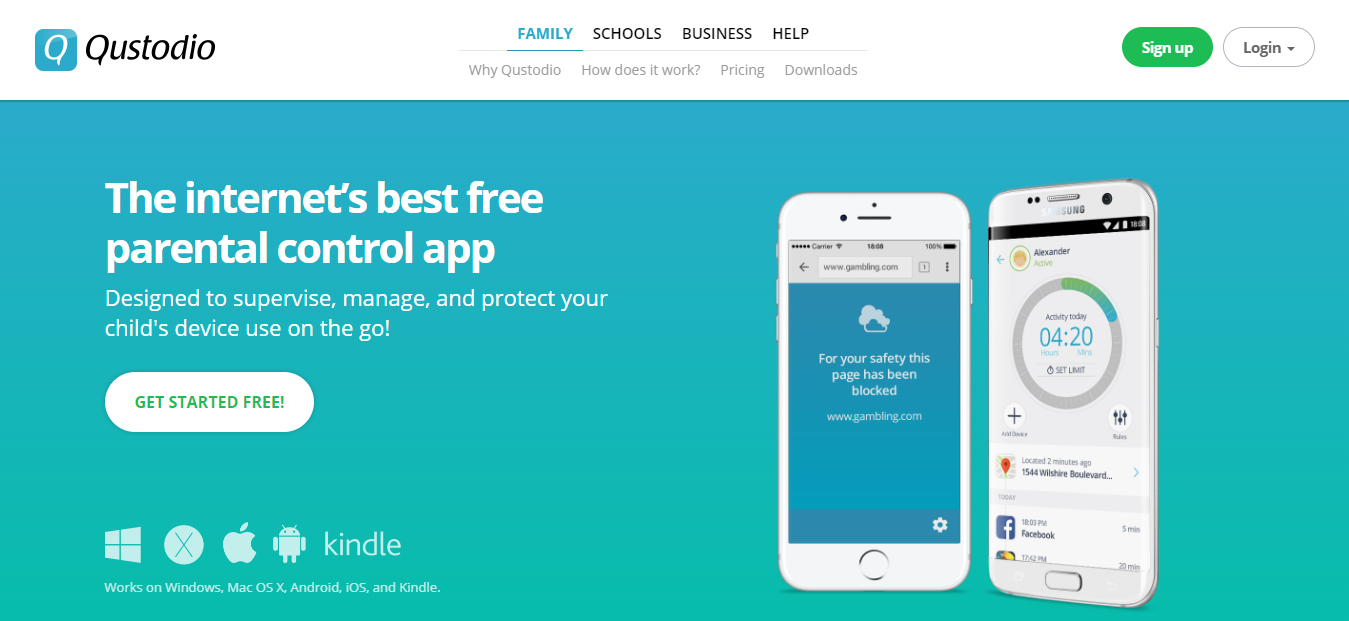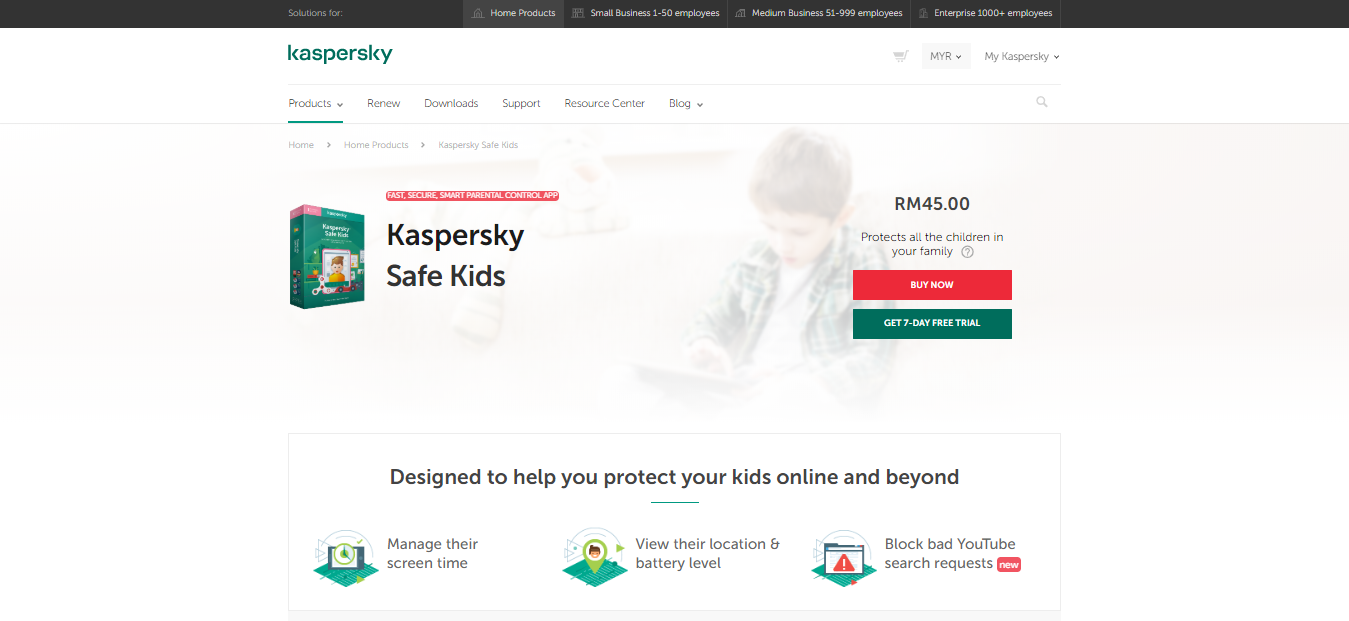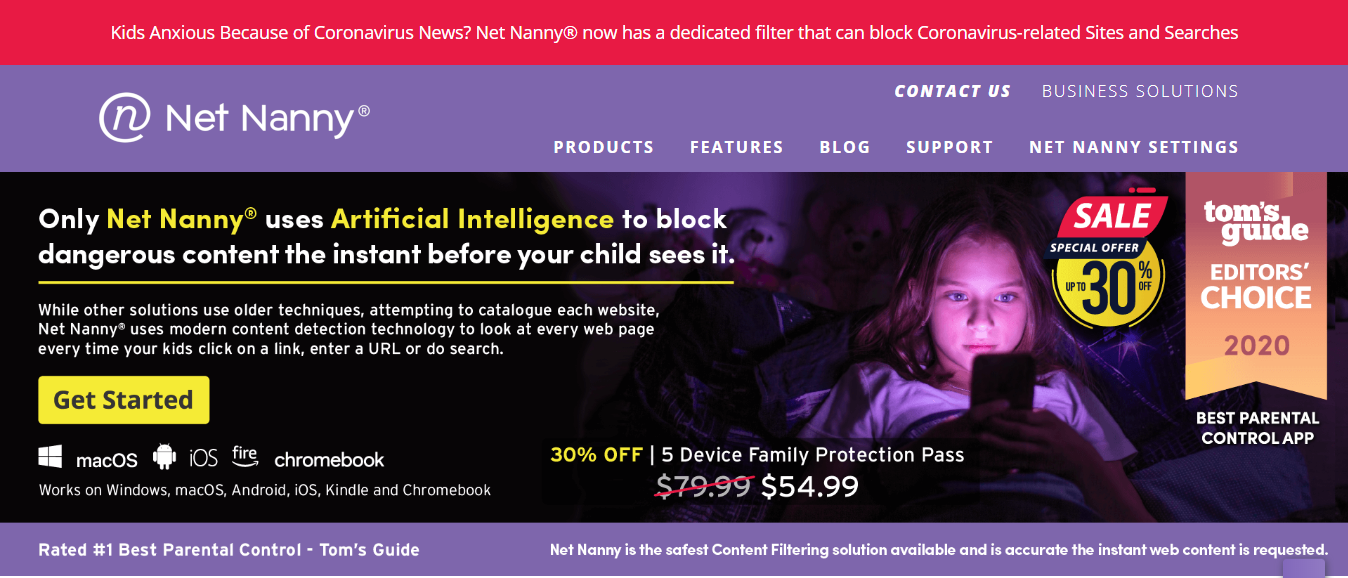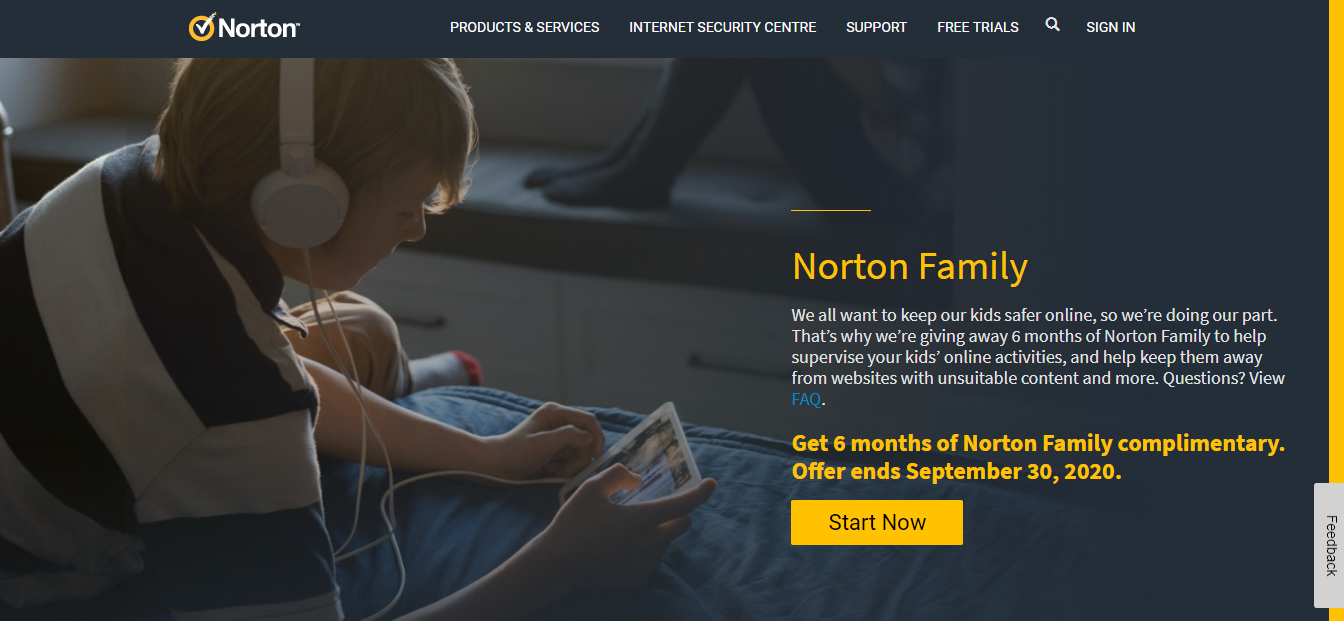
If you wish to keep your kids safe online, you will definitely need a parental control solution that monitors all of their devices. That includes the phones, tablets, and any devices they have with them. Usually the control apps cover the smartphones more commonly than they do for any tablet. This is an area or a prime example that some parents may have issues with.
Keeping your kids safe online may be tough. But it does not have to be if you know which parental control app to use. You can set limits and keep your children safe at the same time as a responsible parent.
Parental control apps allow you to take charge and decide how much time your kids spend online. You can even restrict their access to certain apps or websites. Here are some of the apps that are the top cross-platform performers according to a lot of users who have tried them out before.
How to Choose the right App for Parental Control?
For every parental control app that has been made and publicized for usage, not all of them are perfect (although there are some exceptions). You may hear of one or two parental control apps that are perfect, but do keep a note of the fact that it may be overhyped kinds of stuff.
However, to be fair, there are parental control apps that come close to being perfect. You may hear of apps by Norton Family, Qustodio, and Net Nanny being thrown around a lot as suggestions and recommendations. You’ll see how far you can go with these apps, as there are pros and cons to every monitoring software and product.
The Ways to use Apps to Monitor Kids Phone
If you wish to monitor your children’s device activity in the modern age, you will need a parental control service that works well on mobile platforms, in addition to what they do on the desktop. We are sure that their safety and security are your utmost concern. Kids can get into all sorts of disruption on their mobile phones (or tablets).
Maybe they are spending too much time every day staring at a screen or use age-inappropriate sites and apps. In any case, a good parental control app can help aid your sense of control and help you keep a cautious eye out for anything that can be harmful to them, like pornography, violence, adult content, and any other vile online activities.
It may not be just fretting over your kids’ viewership of questionable content. You can also wield your parental controls over your kids’ app usage, set time limits and internet filter, limit their screen time, set web filters, cyberbullying, self-harm, limit their social networks usage and internet access, track location, limit device use and social media apps, and other harmful material to name a few. There are a number of other things you can do with parental apps too (like viewing their text message and email alerts, manage their mobile device management, listening to their phone conversations, to name a few). You may not even know what they are texting their friends for in the middle of the night.
Just make sure to have open and ongoing conversations and communication with your children about the importance of responsible device usage. That way they don’t immediately plan in advance to get rid of whatever parental iPhone controls or parental control apps you have installed. They may even be able to find some clever workarounds the parental control app too.
Parental control apps can help you maintain control in a selection of ways. Some of the most common kinds of monitoring include web content filtering, app blocking, time management, and location tracking. Note that some of those apps are great parenting control on iPhone, whereas some others are better as parental control for Android.
We will look into more detail about these top features later below. Keep in mind that some of the products we highlighted are mobile-only solutions. It means that the apps cannot monitor your child’s activities on their Macs or PCs. If these platforms are your greatest concern, you will have to find one that covers as such.
Most parental control services work almost the same with the same goal in mind. You install a monitoring app on every device you wish to keep tabs on and then manage settings and restrictions from either a web desktop or parent-focused mobile app. Changes you make on any device will usually take effect immediately. You will appreciate those services that offer flexible device management, to be honest.
Criteria
Before we continue, for obvious reasons you may want to consider the following criteria before settling for any of the parental control apps. As there are so many great parental apps on the market, it is very easy to be overwhelmed with the diversity of available choices – for iOS and Android devices, that is.
Number of Features Available
You will want to check out how many features the app has. Most of the features available usually cover more or less the same across all the apps on the market, like:
- Time Management
- Location Tracking
- Block Access
- Web Filtering (Includes site and browsers blocking)
- Profanity Filters (For example – nudity, rude comments and messages/messaging)
- Time Limits
- Social Media Monitoring (Facebook, Twitter, Instagram, etc)
- Device Usage
- Location History and Location Details (Includes track phone location)
- Internet Activities (eg the game they play, porn, and other stuff)
These are some of the most common features that are common and universal across most (if not all) parental control software. There will be some apps that may offer a bit more features than its peers, but its goal remains the same. But then, at a glance, a lot of times control apps come in the form of spyware.
The bottom line is that you will want to find yourself one with the most suitable features for you and your kids. After all, getting parental control software is to keep track of your kids’ internet activities and obtain an activity report.
The number of features they give does not mean you will need or use all of it. You will probably only use a small number of its features, so you may want to consider getting a package where you really need the features.
After all, the main purpose of a parental control app is one that keeps your kids away from potential dangers and situation, take preventive measures on your kids from committing vile actions (eg: interactions with unsavory strangers and friend, engagement with community or party of danger, and any other problem). Some even allow you to take a screenshot of their online accounts. It’s pretty much up to you to set such boundaries and put on a blocker on your teens and tweens’ predators and bad habits.
Ease of Use
The app’s ease of use is another important factor to consider. This is because if you get one that is complicated to use, it can really mess with your mood and time. Most modern-day parental control apps are made with technology-inept adults in mind. So you do not have to worry too much about learning the ropes of apps for parental control.
Plans and Pricing
This is definitely another important factor for you to consider before settling for that control app. Given that some may be out of your budget plans, it does not mean that there are no other alternatives for you to choose from.
There is some parental app that comes with a free version. However, do not expect it to come with the full range of features. Certain apps only limit your access to a certain percentage of its available features and products. That much is guaranteed.
At the same time, the parenting app software packages only allow you to track three devices or less. Some allow you to track up to five devices or more. Then again, most average families may only need to track less than 5 devices that are worth their money.
The Best Parental Control Apps For Android and iPhone Devices
Now that we have done with the criteria part, let’s have a look at some of the best parental control apps that are currently available in this list below.
1. Qustodio
Qustodio is perhaps one of the most popular and common parental control app for both iOS and Android devices alike. Having said that, Qustodio is known to be a user-friendly, efficient, and excellent app for parents who are short on time. It comes with a dashboard that lets you view all the recent mobile activities on your kids’ connected devices to your heart’s content.
The activities that you can view from your kids’ devices are not just limited to Instagram and Twitter. From here, you can also set time limits, track texts, filter out certain types of websites, and block any dirty games or apps.
It comes with plenty of customization options and makes it a great parental control app to use. More so especially when you need it as a great parental control app to use when managing devices for kids or multiple ages. It also works on Kindles (Kindle Fire) and Macs, along with as a great parental control for iPhone, which is rare so to speak.
You should take note that Qustudio’s content filtering and web blocking is more sophisticated than some others that some users have mentioned. This is why Qustodio is recommended by most for teens and more tech-savvy kids who may try to find a workaround, for that matter.
Not forgetting to mention, Qustodio is one of the most comprehensive parental control apps available and it even lets you choose between a free basic version and a paid version for you to access extra features. Although to be fair you do get to try out all the premium features for a 3-day period.
Besides the regular features that it provides – like social media monitoring, calls, and texts monitoring, website blocking, etc. – it also offers plans that cover between 5 and 15 devices. That is if you have several children that you will like to keep track of. The more devices you wish to include, the pricier it gets, which makes sense because the more service you want, the more you will have to pay for it.
Its 15-device plan is just under US$140 a year. Basically that works out to about US$9 per device. However, its short premium trial period is one of its downsides, which may be an issue for some parents who wish to try out the premium package for longer before making a final decision.
Its location tracking and panic button (a direct line from your kids for any immediate help or emergency) features are some of its best strength, along with its screen time monitoring, web filtering and blocking features. However, its downside is that it is not compatible with antivirus software.
2. Kaspersky Safe Kids
Kaspersky Safe Kids is one of the best options for budget spenders. It delivers a lot for a low price, so that means if you are a family who are on a tight budget or do not wish to spend too much on parental control software, then this will be a great option.
Not forgetting to mention that Kaspersky is a fan favourite mobile antivirus option that comes with a pretty good parental control. The child app comes with everything that you will want from a parental control app. That includes tools to manage your kids’ screen time, having the ability to see their real-time location (with geofencing) and even the battery levels.
And yes it does come with your regular social media activity and website activity monitoring. You can also block access to inappropriate websites, apps, and games. There are even expert advice from child psychoanalysts for the really tricky and complicated things.
It’s the same thing where there is a feature that allows you to block specific kinds of YouTube searches and review YouTube search history if you are a paid user. It only works on Windows computer and Android devices, including the YouTube Android app.
Kaspersky’s location tracking and geofencing work well in both iOS and Android devices, as does its web monitoring and device scheduling. However, app management is limited to iOS devices, and the iOS app cannot monitor calls or texts at all.
Unfortunately, limitations within iOS devices mean that not all of these options are available for iPads and iPhones. Although there aren’t as many limitations for Android devices, which does not mean that some of the parental apps do not have limitations toward it.
We, later on, found out that in March 2019 Kaspersky has filed an anti-trust complaint against Apple for forcing the removal of some features from Kaspersky Safe Kids – all for reasons that are their own.
Apple has dropped hints later in June 2019 saying that they may relax some of its tighter and stricter restrictions on iOS parental-control apps with iOS 13. But we have heard news from iOS users that they have yet to see anything different and it is said that Kaspersky’s complaint is still ongoing.
When it comes to app installation, a lot of parents said that they have very little to no problems in installing it. All you have to do is to create the profiles for the children you wish to monitor. Their names and birth years are the only information you need to provide.
After installing the app, you will receive age-sensitive advices on how to discuss the app with your children. You will see this through the app. If you find this annoying, you have the option of turning it off in the settings.
At the same time, after you have installed the app, you can identify the platforms your child uses and install the software in each of your children’s devices. It does a solid job at guiding you through the process on each platform. iOS is said to be the most involved, with the need to install a profile from the Safari browser. No separate downloads are required.
Although it may not be the best choice in terms of its feature offering, we think that it covers what most people will consider being essential features at an amazing price.
As mentioned previously, Kaspersky Safe Kids is one of the cheapest options on the market (and on this list too). Its prices start at US$15 for a year’s access for 1 device. However, you will have to take note that if you wish to install it on multiple devices, then it can get more expensive than other options that are currently on the market – if you are planning to install in in several devices, that is. But if you want to install it on just 1 device, then it is a pretty great budget option.
If you have any complaints of the app or software, you can direct it via its web portal. Hence, if you are likely to set most of these things once, and then track your kids’ activities from there. You’d want your kids to get a night’s worth of sound sleep or wouldn’t want your kids to go past their bedtime and be on their child devices all the time, do you? That is where the bedtime controls come in. You can always peruse your cell phone tracker via the dashboard app to control the family devices link to control features.
3. Net Nanny
Net Nanny is another really great parental app choice for you to consider. It has excellent web-filtering technology and modern, intuitive design.
Among all the parental control apps parents have used and tried, it comes closest to having feature parity between its iOS versions and Android versions. Its iOS capabilities do not seem to have been affected by Apple policy changes.
Net Nanny is able to track your children’s location, display their location history, and set time allowances and schedules, check their text messages, view text messages contacts equally well on both platforms. The iOS version even lets you block several dozen apps on your kids’ phones; the Android one lets you block all of them. Take charge of content filtering on your children’s phone.
As one of the oldest parental control software solution, its mobile apps still hold on to Net Nanny’s powerful web-filtering technology at their core. The advantage is that Net Nanny’s updated Windows PC and Mac parental-control software, which were never rebranded, are now part of the app’s subscription.
This best parental control app option is lacking in a call- or text-message monitoring can be quite a deal breaker for some parents, however. Furthermore, the relatively high Premium subscription fee can also be an issue for other parents who are on a tight budget. But if the existing features do cover all or most your needs, then Net Nanny is definitely one of your top options to consider.
Upon installation, you will find that it comes in different names on Apple devices and Android devices. It is known as Net Nanny Parental Control App or Net Nanny Child on Android phones. On iPhones, they are known as the Net Nanny Admin App or Net Nanny.
The reason for this separation is because children tend to vote down parental-control apps for pretty obvious reasons. Separating it helps the overall rating of the parents’ app.
As soon as you have created your account, you will then need to start with the child’s device. This is where you create the child’s profile by simply entering the individual’s name, gender and age. We did find it a little funny that you have to enter an age rather than a date of birth — you will definitely have to manually update this in the future.
It is a strong parental control app, undoubtedly. Its thoughtful design and helpful touches like Family Feed and App Advisor set it apart from some of the competition. Parents with several children or devices to keep track of will find the Family Feeds rather compelling. As long as the text monitoring does not concern you, then Net Nanny is definitely one of your best options to choose from.
Net Nanny follows the freemium model, with its basic version of the mobile app available at no charges. However, it’s paid tiers that add features that you may find useful. The mobile app supports Android, iOS, and Kindle, along with paid subscriptions that include the Windows and Mac desktop clients. Chromebooks that can access Google Play are also able to support via the Android app.
The free Net Nanny tier gives you only the parent app version, not the child ones. (This is a change from its previously known brand as Zift’s freemium model). You will get the editorial parts of the Family Feed and the web-based Parent Portal, which consist of useful tips and other good-to-have information about keeping your kids in line online on their child device. But you will not be able to see what your kids are doing on any of their devices.
When you sign up, you will get full use and access to the premium features for 3 days, including child apps. It should offer you enough of a taste of the full Net Nanny experience so that you can determine whether it is the right fit for you before you pay for a year or more. However, if you are looking for a permanently free option, we will recommend something else like the Kaspersky Safe Kids, which offers a more robust free tier.
If you choose its premium packages, the lowest premium-priced package starts from US$39.99 per year just for 1 device license. It doesn’t cover the mobile apps, to begin with, and mostly for other aspects like general texts and calls.
You have more options for 5 devices priced at US#54.99 per year, and 20 devices for US$89.99 per year. Those packages can be used on a combination of Android, iOS, Kindle, Windows, and in the near future, macOS devices.
4. Norton Family Premier
Norton Family Premier is like its peer, Kaspersky Safe Kid, where it comes as an affordable option. It has a pretty good web dashboard and has no limit on the number of monitored target devices. Furthermore, it comes with easy setups and configurations too.
Norton Family’s wealth of features and easy setup makes it really easy for parents to track and manage their children’s activities across multiple devices. The only downside is that it does not work on Macs.
Many parents who have used this parental control software reported back saying how they find it as a fantastic web filtering tool. It does not sacrifice and of its quality when it comes to protecting kids using Android devices. It is even one of the top picks or top choices for a lot of technology companies.
Upon installation, you will find that it will request for your kids’ details. That and along with a bunch of contacts, calls, locations, photos, media, and files. It will also further guide you on how to create a user account for your child specifically, as well as how to block guest mode.
The only downside to its setup is that when starting the device, you cannot switch into any of the previously setup profiles immediately. The admin profile is the default. You will have to effectively unlock the device each time it restarts and then select the child profile to maintain the configuration.
The app itself comes with a lot of useful features that are commonly found in other parental control apps too. Features such as web filtering, time supervision, web interface, location tracking, to name a few. You can even choose to put restrictions on malicious websites and video streaming services if you don’t feel comfortable with your kids accessing these places.
We should mention how it works very well on Android devices, but less so on iPhone or iOS devices. However, in Apple’s defense, it comes with a built-in set of app blocking tools in the restriction section of its Settings app. Here you can block apps such as Safari, Camera, FaceTime, and even Siri.
There are a number of other features that you can choose to block on your kids’ iPhone devices, such as blocking their access to Screen Time, iTunes, and iBooks store. To take things further, you can also block them from downloading and deleting any apps and making any in-app purchases.
You will know it here that Norton Family relies on some of these built-in protections so it is reasonable to consider just using built-in tools to monitor iOS devices rather than paying for parental control services. Just saying!
To put it simply, Norton Family Premier offers an impressive and wide range of parental control and monitoring features for parents of today’s extensively-connected kids. It can track an unlimited number of devices, has an intuitive web interface, and logs a lot of usage data. Norton Family even fixed some glaring web filtering problems in its latest updated versions. However, Norton Family does not support macOS and it is still missing geofencing capabilities.
Our Verdict
Whether if you are looking for an app to protect your kids from online bullying or just to prevent them from accessing malicious sites, there are control apps to help you in that. However, always remember to be open with your kids and try to communicate as much as possible. When it comes to choosing the right parental control app, it is important to identify your family’s specific needs. Just remember to do a feature comparison and review between the options that are available to you, no trouble at all.
After all, it is your kids’ online security that concerns you the most. Put internet filters if you think your kids spend way too much time online, control their app management and block access if you have to.
Frequently Asked Questions (FAQs)
Here are some frequently asked questions (FAQs) that some parents may find useful.
Q: How can I monitor my kids’ devices without them knowing?
Most modern-day parental control apps lets you track your kids without them knowing in the background. So you do not have to worry about them finding out about you checking out their online activities.
Q: What is the best parental control app for teenagers?
You would go with either Qustodio or mSpy if you are serious about protecting and controlling teenagers at their adolescence age. That said, you should be transparent with them and let them know that you are monitoring their phone activities as well as their live location to make sure that they are safe. Transparent communication is important to avoid misunderstanding and rebellious behavior.

As a Master Degree graduate in the Internet Technology field, Stefan is highly dedicated towards improving the overall web security so internet users can browse freely without having to be afraid of technical loopholes. With over 15 years in the internet security industry, you should definitely take his advice seriously.




